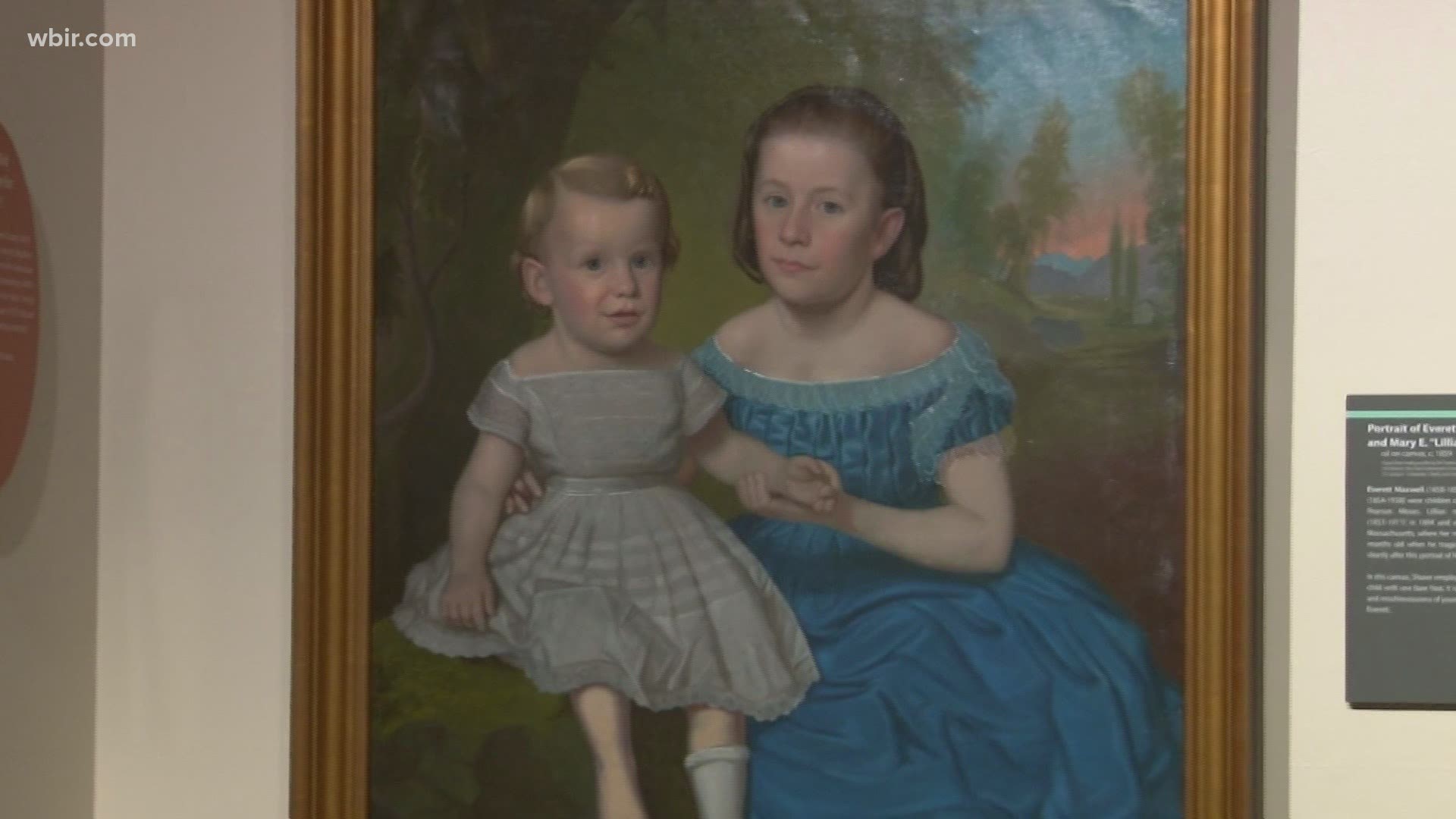KNOXVILLE, Tenn. — The East Tennessee History Center is showcasing a unique exhibit focusing on artist Samuel Shaver.
The idea behind the exhibit is to show the evolution of the Southeast within Shaver's work and highlight the ideas that paintings were basically social media posts of the past.
Instead of selfies, brushstrokes told the stories of history in the 19th century. Shaver had a front-row seat with his brush in his hand.
"[Shaver] was East Tennessee's premier portrait artist in the 19th century," said Dr. Warren Dockter, the president and CEO of the ETHC. "We are the largest repository of his works and we're very excited to have this exhibition."
The Walker family portraits hanging on the sidewall of the ETHC are a perfect example of how Shaver was able to offer an art service in Tennessee usually only provided in more northern states.
"When people like John Sevier would have their portraits made, in the early or sort-of-early 19th century, they would go away to Pennsylvania to sit for a portrait, and [Shaver is] sort of one of the first people in East Tennessee to have people sit for him here," Dockter said.
Paintings and portraits were the social media posts of the past.
"The portrait is how people at the time chose to curate their image. The way we curate our image 15 times a day, they might get to do it once or twice in a lifetime," Dockter said.
Instead of filters and "Facetune," Shaver would use brush strokes to enhance a person's appearance.
"This really explores how people want to be seen," Dockter said. "They would put on their best faces, their best outfits or communicate with Samuel, that they would want certain things included."
While people traded smiles for serious faces back then, they still wanted others to see what interested them at the time, and to show status.
For example, one portrait has Princeton in the background, another has a hunting rifle in the frame.
"You can really see people's stories come to life," Dockter said.
It's a glance into history: a lens into what's the same and what's changed.
"This is taking place while East Tennessee is still sort of coming becoming a more civilized place because it had been a kind of frontier space," he said.
From the canvas to interactive displays, immersing yourself in the past can help you appreciate the present.
Most of all, officials with the East Tennessee Historical Society said they want to shine a light on how Shaver's work helps document the area throughout time.
"I hope that people can walk away and think that they feel a connection to the past that that's the greatest thing I think we can give you," Dockter said.
Who knows? Maybe historians centuries from now will examine our selfies from today.
If you would like to go see the exhibit yourself, the history museum is open 7 days a week. Monday through Friday you can buy tickets at the door from 9 a.m. to 4 p.m.
On Saturdays, doors are open from 10 a.m. to 4 p.m.
On Sundays from 1 p.m. to 5 p.m., visitors can get in for free.

